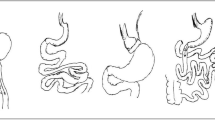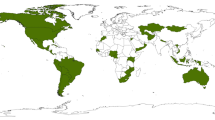Abstract
It remains unclear how preoperative nutrition fortification impacts postoperative growth trajectories and nutritional status among infants with congenital heart disease. A single center retrospective cohort study was performed to evaluate measures of growth among patients who underwent cardiac repair at 0–18 months of age for atrial septal defect, ventricular septal defect, atrioventricular septal defect, or tetralogy of Fallot. Cohorts were analyzed at 0–30 and 31–60 days post-repair as well as at 2, 5, and 10 years of age. Records of 24 patients who received fortified nutrition and 60 patients who received unfortified nutrition preoperatively were reviewed. Those with fortified nutrition had higher growth velocities in the first 30 days post-repair compared to those with unfortified nutrition: 28.4 (23.8–83.3) grams per day versus 16.7 (7.1–21.4) grams per day, p = 0.004. Weight percentile for age was higher in the unfortified group at 2, 5, and 10 years of age (p = 0.02, p = 0.045, and p = 0.01). Body mass index (BMI) percentile for age was higher in the unfortified group at 5 and 10 years of age (p = 0.045 and p = 0.02) with a trend toward higher prevalence of either overweight or obesity compared to the fortified group (p = 0.13). reoperative nutrition fortification among infants with congenital heart disease is associated with higher growth velocity in the first 30 days post-repair and lower BMI percentile for age at 10 years. Further studies are needed to evaluate the association between preoperative nutrition fortification and postoperative outcomes, nutritional status, and prevalence of obesity in adolescence and adulthood.


Similar content being viewed by others
References
Medoff-Cooper B, Ravishankar C (2013) Nutrition and growth in congenital heart disease: a challenge in children. Curr Opin Cardiol 28(2):122–129. https://doi.org/10.1097/HCO.0b013e32835dd005
Diao J, Chen L, Wei J et al (2022) Prevalence of malnutrition in children with congenital heart disease: a systematic review and meta-analysis. J Pediatr 242:39-47.e4. https://doi.org/10.1016/j.jpeds.2021.10.065
Mitting R, Marino L, Macrae D, Shastri N, Meyer R, Pathan N (2015) Nutritional status and clinical outcome in postterm neonates undergoing surgery for congenital heart disease. Pediatr Crit Care Med 16(5):448–452. https://doi.org/10.1097/PCC.0000000000000402
Willinger L, Brudy L, Meyer M, Oberhoffer-Fritz R, Ewert P, Müller J (2021) Overweight and obesity in patients with congenital heart disease: a systematic review. Int J Environ Res Public Health 18(18):9931. https://doi.org/10.3390/ijerph18189931
Jackson JL, Fox KR, Cotto J, Harrison TM, Tran AH, Keim SA (2020) Obesity across the lifespan in congenital heart disease survivors: prevalence and correlates. Heart Lung 49(6):788–794. https://doi.org/10.1016/j.hrtlng.2020.08.020
Fryar CD, Carroll MD, Afful J (2020) Prevalence of overweight, obesity, and severe obesity among adults aged 20 and over: United States, 1960–1962 through 2017–2018. https://www.cdc.gov/nchs/data/hestat/obesity-adult-17-18/obesity-adult.htm. Accessed 16 Oct 2023
Steirman B, Afful J, Carroll MD et al (2021) National Health and Nutrition Examination Survey 2017-March 2020 prepandemic data files—development of files and prevalence estimates for selected health outcomes. https://www.cdc.gov/nchs/data/nhsr/nhsr158-508.pdf. Accessed 16 Oct 2023
Aguilar DC, Raff GW, Tancredi DJ, Griffin IJ (2015) Childhood growth patterns following congenital heart disease. Cardiol Young 25(6):1044–1053. https://doi.org/10.1017/S104795111400153X
Andonian C, Langer F, Beckmann J et al (2019) Overweight and obesity: an emerging problem in patients with congenital heart disease. Cardiovasc Diagn Ther 9(2):S360–S368. https://doi.org/10.21037/cdt.2019.02.02
Elgersma KM, McKechnie AC, Gallagher T, Trebilcock AL, Pridham KF, Spatz DL (2021) Feeding infants with complex congenital heart disease: a modified Delphi survey to examine potential research and practice gaps. Cardiol Young 31(4):577–588. https://doi.org/10.1017/S1047951120004370
Nydegger A, Bines JE (2006) Energy metabolism in infants with congenital heart disease. Nutrition 22(7–8):697–704. https://doi.org/10.1016/j.nut.2006.03.010
Mitchell IM, Davies PS, Day JM, Pollock JC, Jamieson MP (1994) Energy expenditure in children with congenital heart disease, before and after cardiac surgery. J Thorac Cardiovasc Surg 107(2):374–380
Leitch CA, Karn CA, Ensing GJ, Denne SC (2000) Energy expenditure after surgical repair in children with cyanotic congenital heart disease. J Pediatr 137(3):381–385. https://doi.org/10.1067/mpd.2000.107844
Author information
Authors and Affiliations
Contributions
All authors contributed to the study conception and design. Material preparation and data collection were performed by all authors. Data analysis was performed by SM and SP. The first draft of the manuscript was written by SM and all authors commented on previous versions of the manuscript. All authors read and approved the final manuscript.
Corresponding author
Ethics declarations
Competing interests
The authors have no relevant financial or non-financial interests to disclose.
Additional information
Publisher's Note
Springer Nature remains neutral with regard to jurisdictional claims in published maps and institutional affiliations.
Rights and permissions
Springer Nature or its licensor (e.g. a society or other partner) holds exclusive rights to this article under a publishing agreement with the author(s) or other rightsholder(s); author self-archiving of the accepted manuscript version of this article is solely governed by the terms of such publishing agreement and applicable law.
About this article
Cite this article
Murray, S.E., Zimmerman, D. & Patel, S.S. Preoperative Feeding Fortification Among Infants with Congenital Heart Disease is Associated with Higher Growth Velocity in the First 30 Days Post-repair and Lower BMI Percentile for Age at 10 Years: A Retrospective Cohort Study. Pediatr Cardiol (2024). https://doi.org/10.1007/s00246-024-03433-9
Received:
Accepted:
Published:
DOI: https://doi.org/10.1007/s00246-024-03433-9




